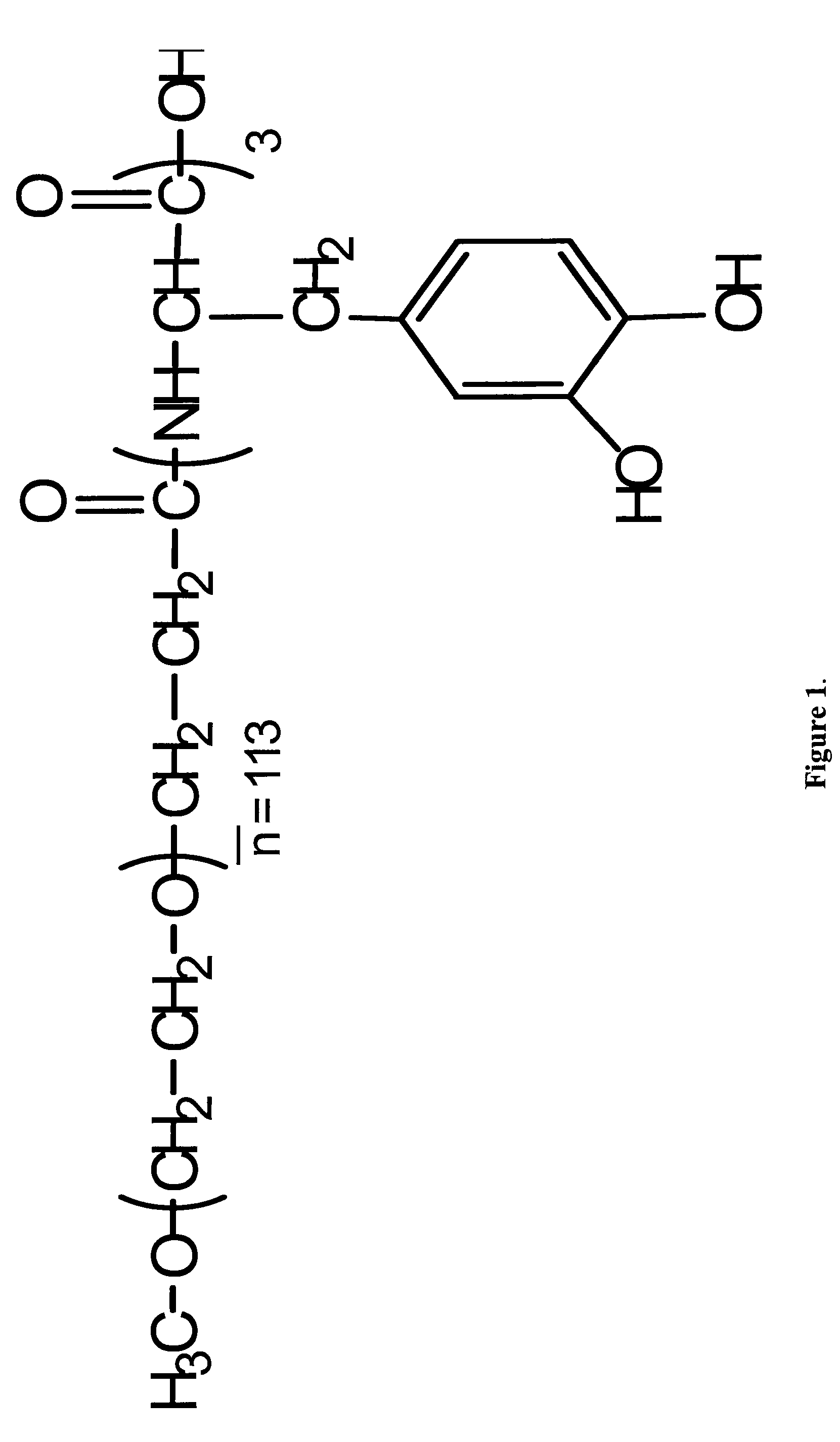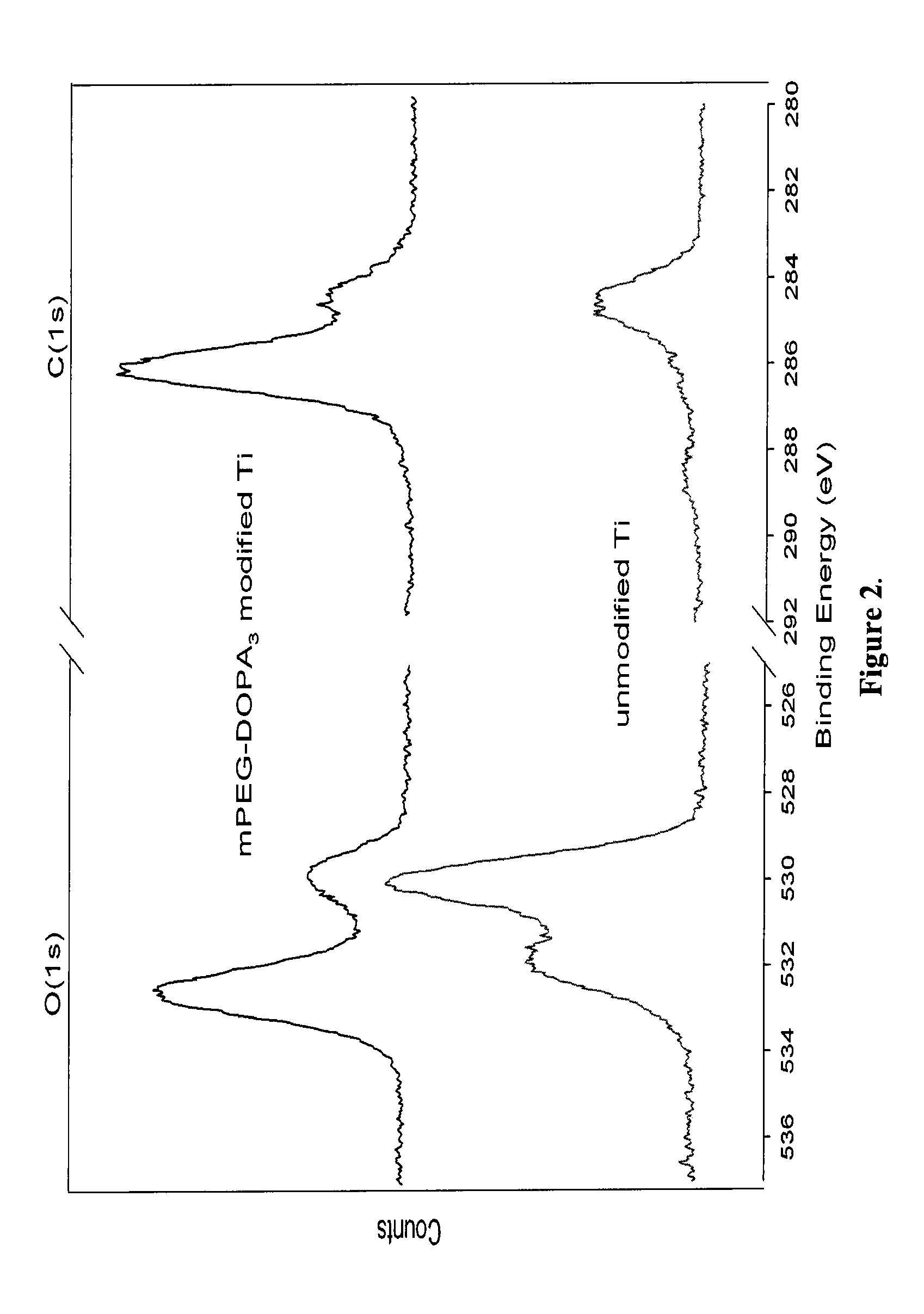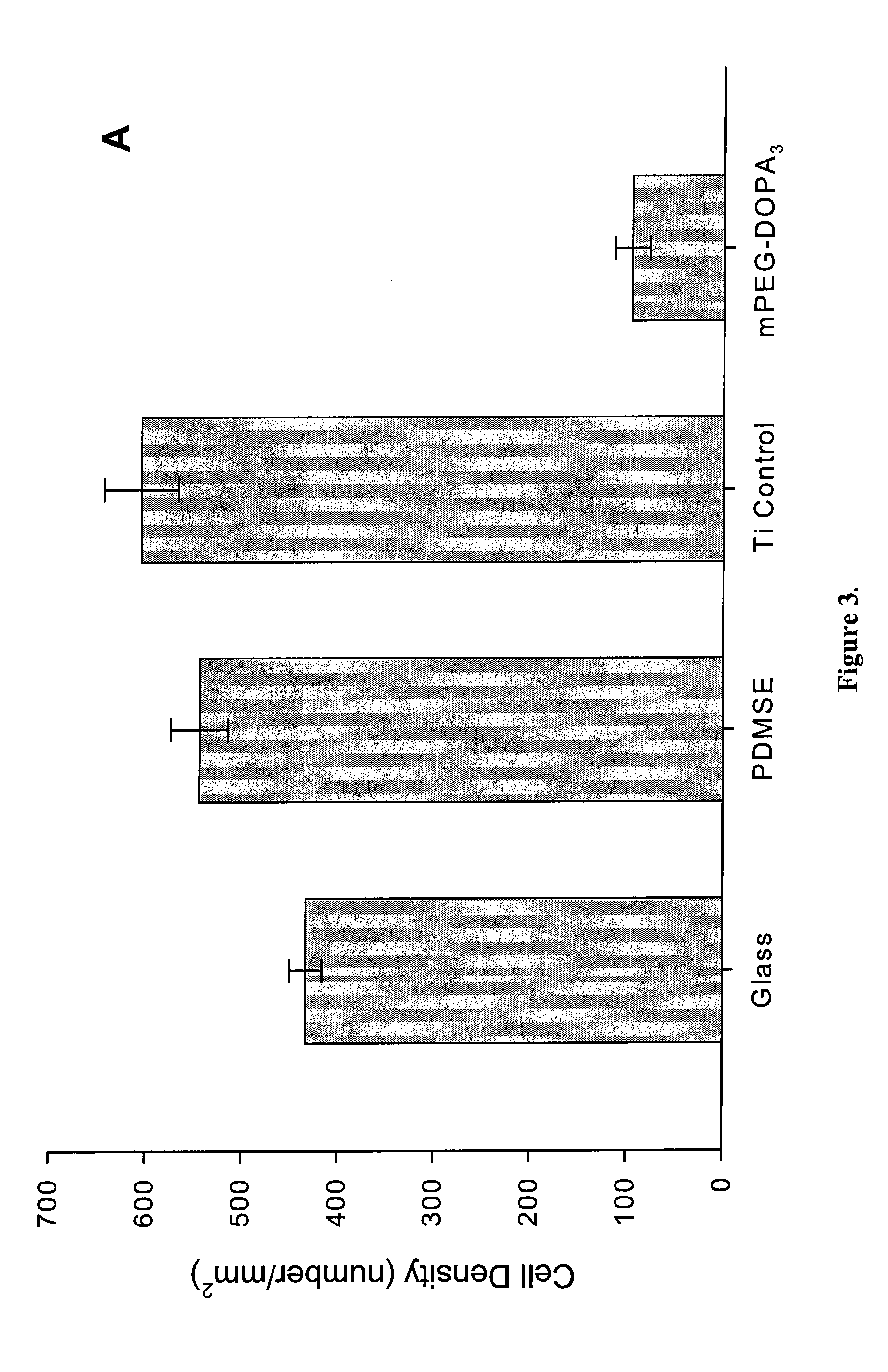Fouling Resistant Coatings and Methods of Making Same
- Summary
- Abstract
- Description
- Claims
- Application Information
AI Technical Summary
Benefits of technology
Problems solved by technology
Method used
Image
Examples
examples
[0044]The marine antifouling and fouling-release performance of titanium surfaces coated with a bio-inspired polymer was investigated. The polymer consisted of methoxy-terminated poly(ethylene glycol) (mPEG) conjugated to the adhesive amino acid L-3,4-dihydroxyphenylalanine (DOPA). Biofouling assays for the settlement and release of the diatom Navicula perminuta and settlement, growth and release of zoospores and sporelings (young plants) of the green alga Ulva linza were carried out. Results were compared to glass, a poly(dimethylsiloxane) elastomer (Silastic T2) and uncoated Ti. The mPEG-DOPA3 modified Ti surfaces exhibited a substantial decrease in attachment of both cells of the diatom Navicula perminuta and zoospores of the green seaweed Ulva linza as well as the highest detachment of attached cells under flow compared to control surfaces. The superior performance of this polymer over a standard silicone fouling-release coating in diatom assays and approximately equivalent perf...
PUM
 Login to View More
Login to View More Abstract
Description
Claims
Application Information
 Login to View More
Login to View More - R&D
- Intellectual Property
- Life Sciences
- Materials
- Tech Scout
- Unparalleled Data Quality
- Higher Quality Content
- 60% Fewer Hallucinations
Browse by: Latest US Patents, China's latest patents, Technical Efficacy Thesaurus, Application Domain, Technology Topic, Popular Technical Reports.
© 2025 PatSnap. All rights reserved.Legal|Privacy policy|Modern Slavery Act Transparency Statement|Sitemap|About US| Contact US: help@patsnap.com



